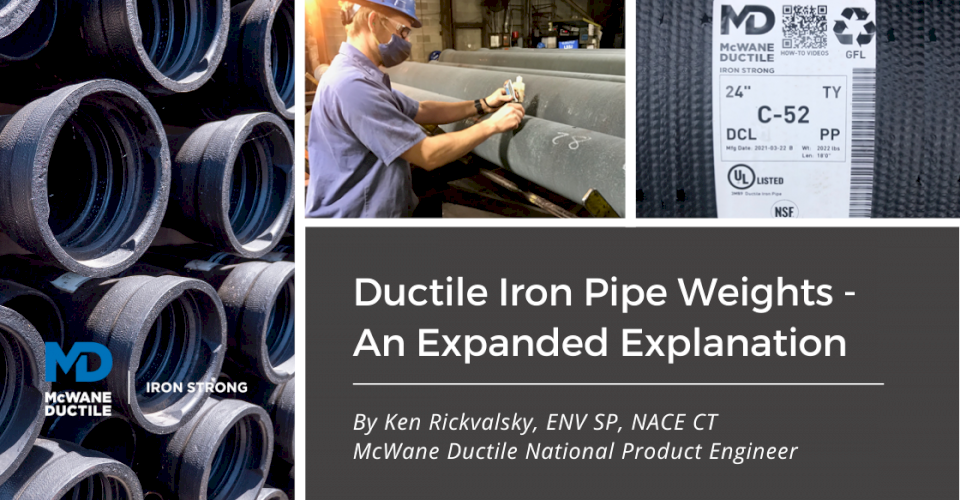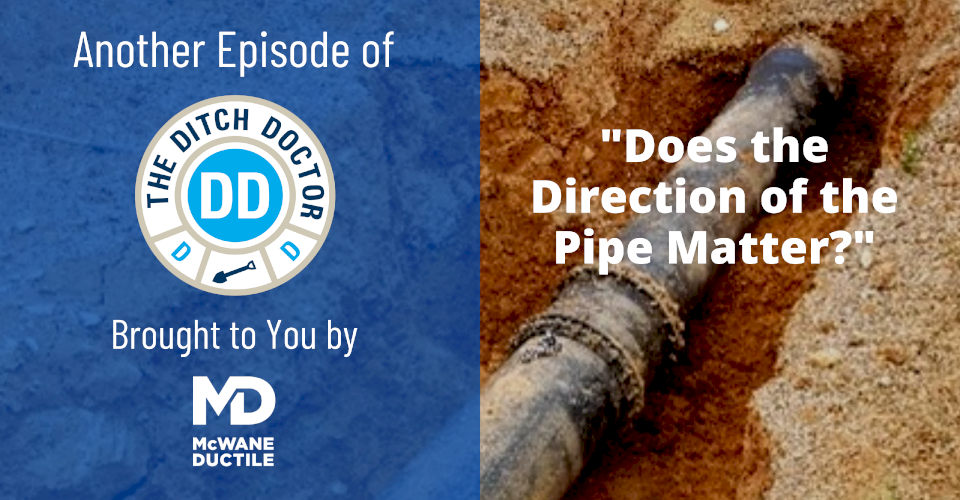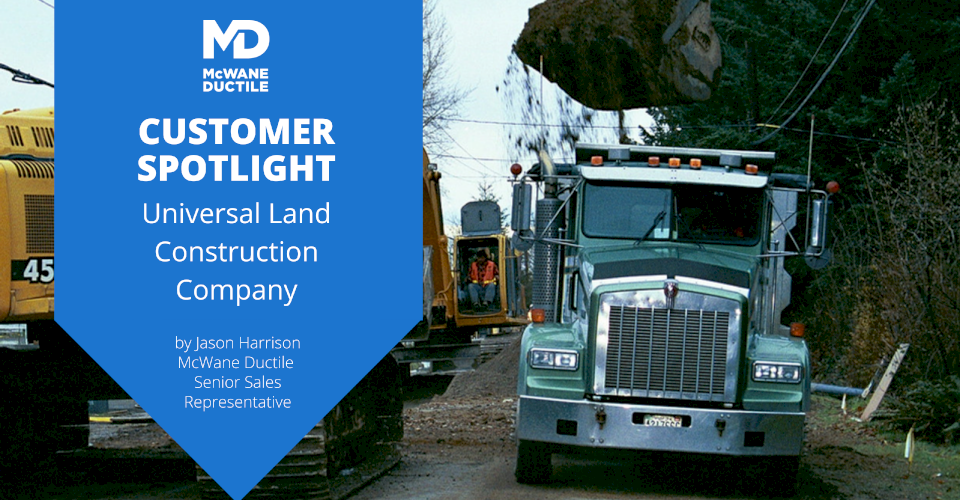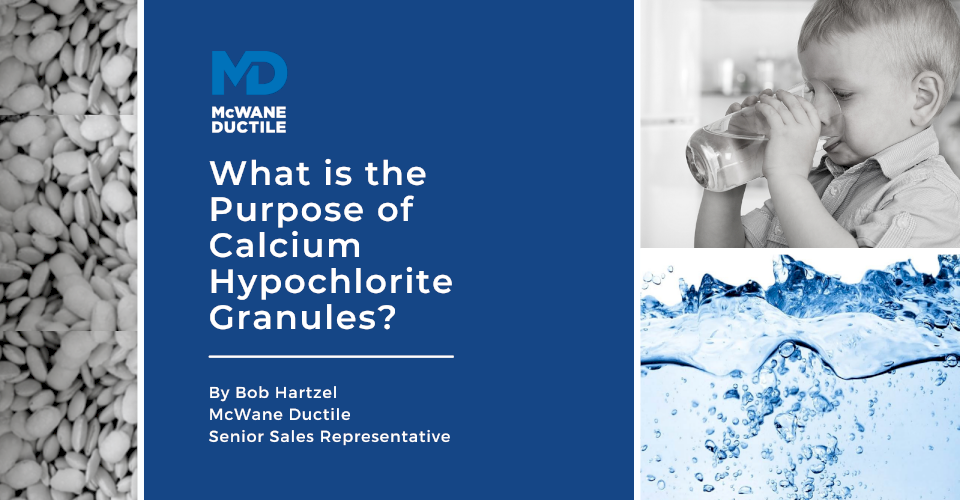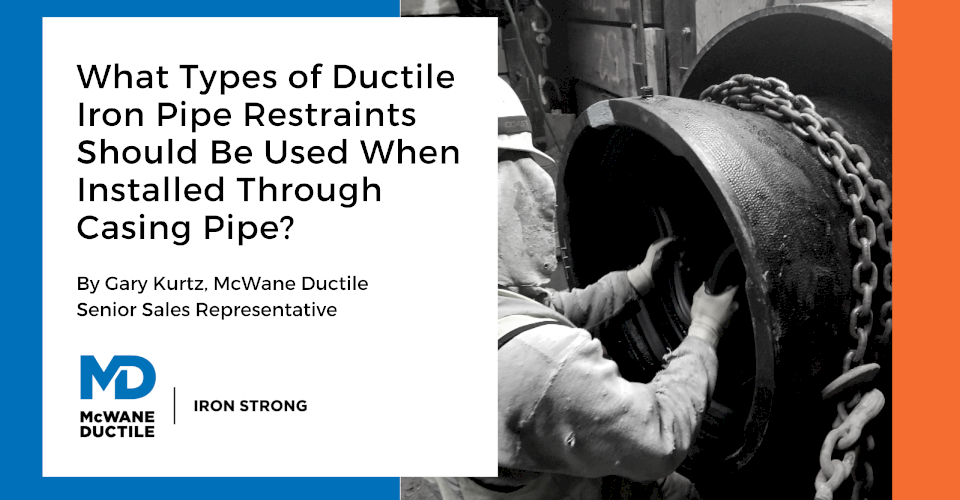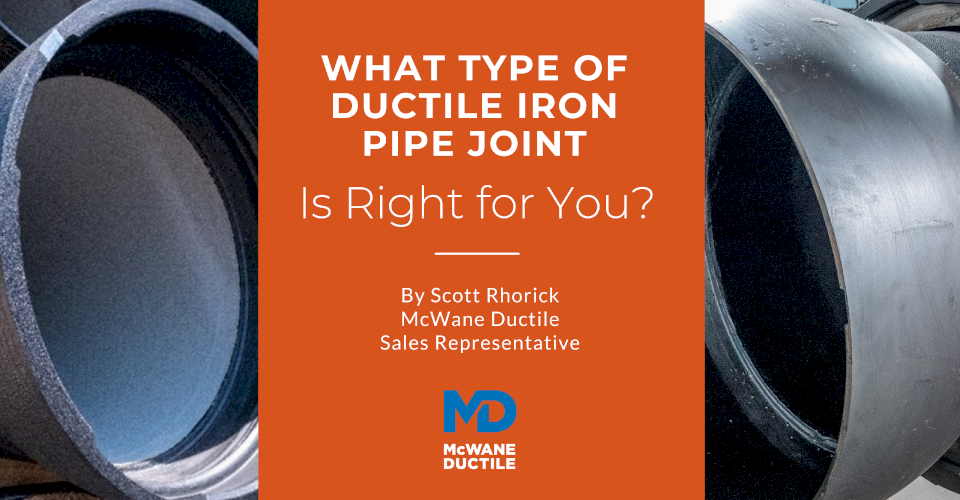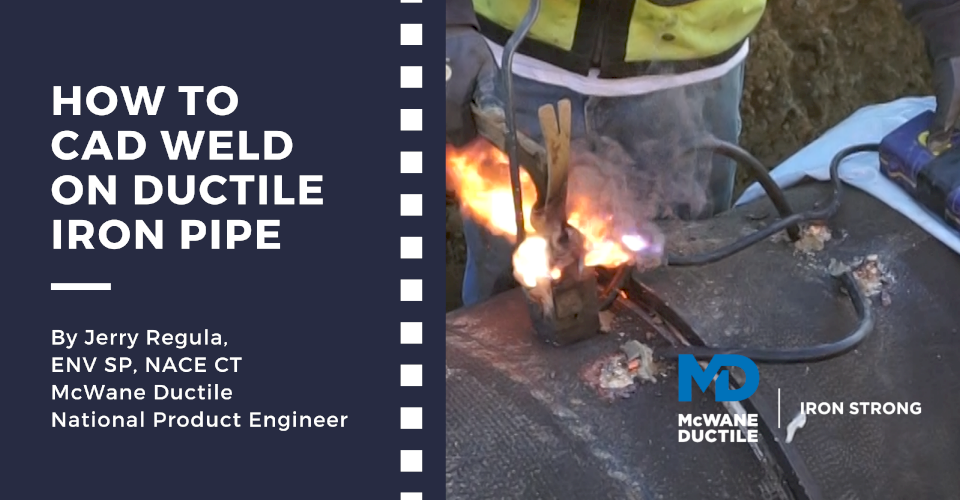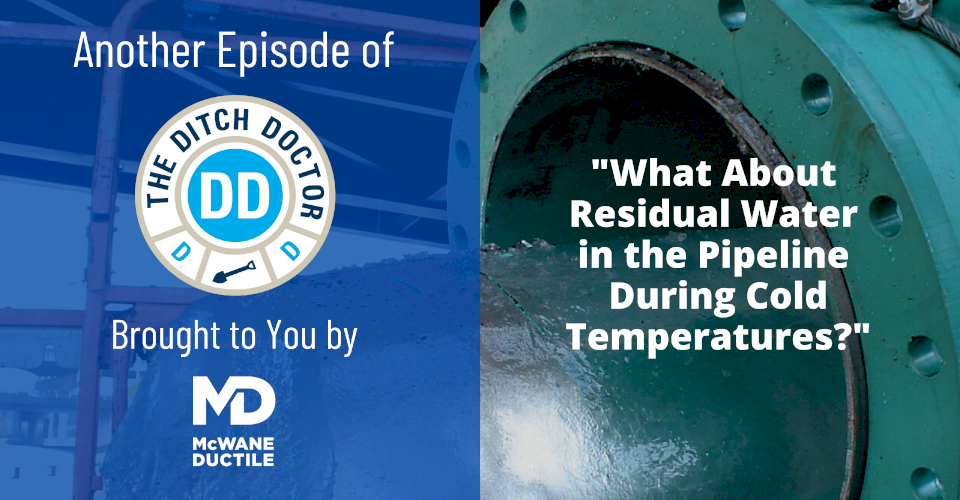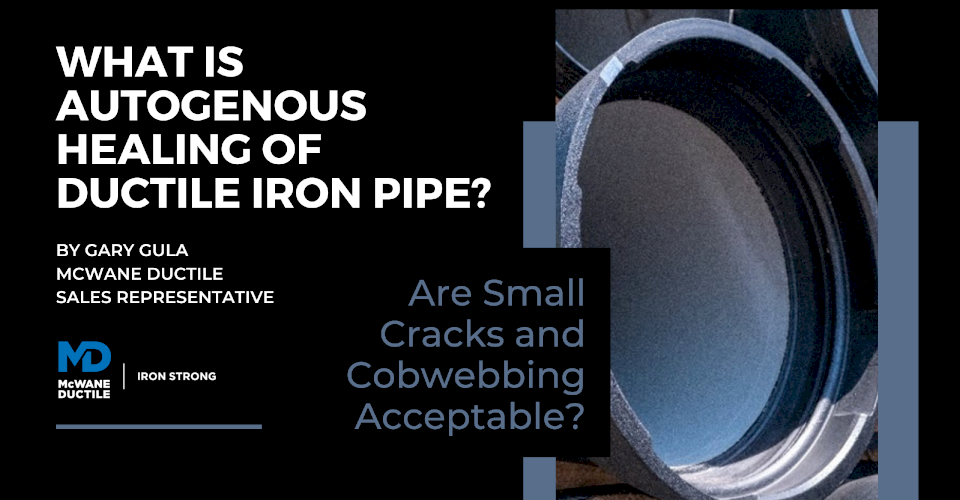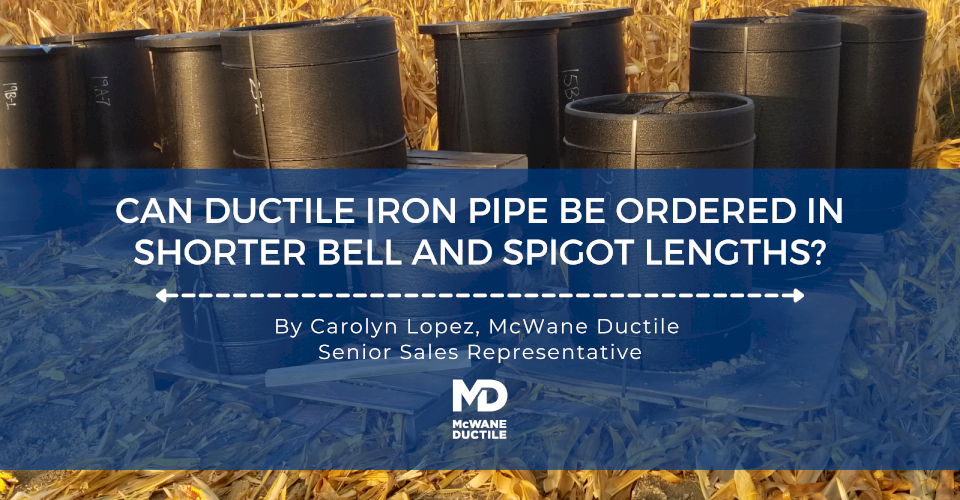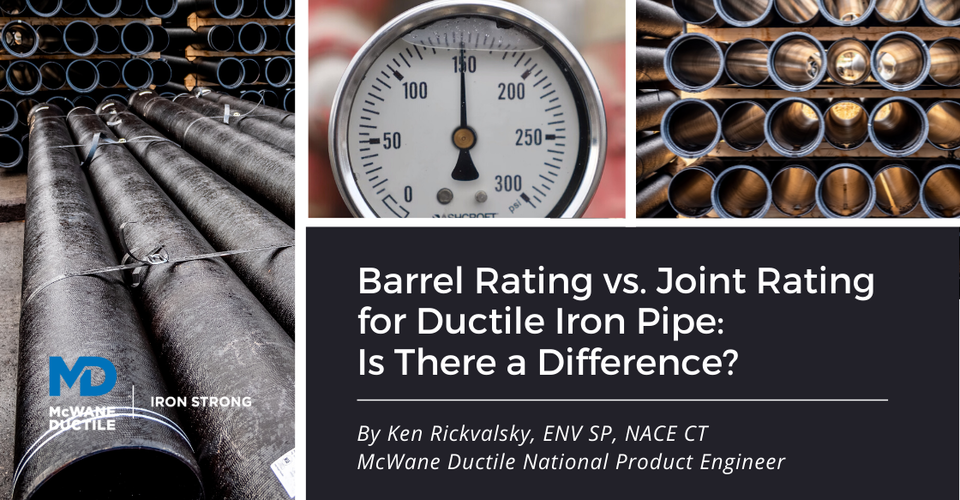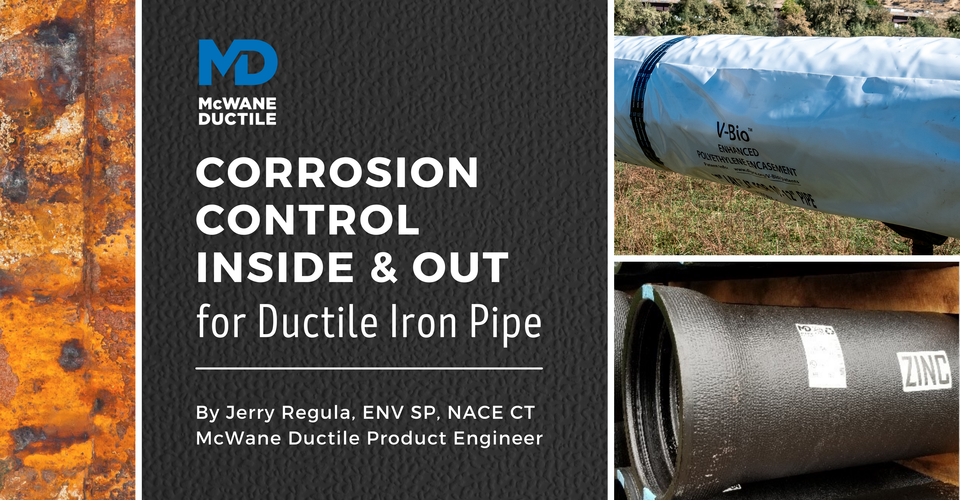-
Ductile Iron Pipe Weights - An Expanded Explanation
04/16/2021 In Products Services TechnicalThis article takes a deeper dive into concepts outlined in the July 2020 entry prepared by my co-worker Gary Gula, How Much Does Ductile Iron Pipe Weigh and Why Does It Matter to You? Specifically, we will focus on the pipe weight itself, answering questions such as: From where do these weights originate? Why do we show weights on each pipe? How trustworthy are these weights as provided? And, What do these weights mean to me, the pipe customer?
-
Ask the Ditch Doctor - Does the Direction of Ductile Iron Pipe Matter?
04/01/2021 In Installation ProductsHelp Me Ditch Doctor,
The inspector on this pipeline project came out here and just told us we are laying pipe in the wrong direction. He said the bells have to face the other direction like the plans show. He wants us to dig up the 1,000 feet of pipe we've already installed and reverse each pipe. Is he for real? Does it really matter?
-
Universal Land & McWane Ductile - A Relationship Spanning Generations
03/27/2021 In Our CompanyMcWane’s role as one of the world's most important suppliers of waterworks and monitoring products is based on fulfilling our responsibilities to our team members, our communities, and our customers. Our foundries produce products that deliver water and that last for generations.
-
What is the Purpose of Calcium Hypochlorite Granules?
03/20/2021 In Environmental & Safety TechnicalCalcium hypochlorite is an inorganic compound added in granular or tablet form added to water to kill germs that can make people sick. When used correctly, this compound destroys germs that can cause numerous health problems. ANSI/AWWA standard C651-14 incorporates essential procedures and requirements for the disinfection of new potable water mains. In this blog, we’ll cover why, when, and how it’s used in the waterworks industry.
-
What Types of Ductile Iron Pipe Restraints Should Be Used When Installed Through Casing Pipe?
03/12/2021 In Installation Products TechnicalAs a companion piece to the Iron Strong Blog entry, What Type of Ductile Iron Pipe Joint Is Right for You? by Scott Rhorick, this article takes a deeper dive into the specifics of installing restrained joint Ductile iron pipe (DI pipe) through a steel casing pipe. While many options are available industry-wide, this article concentrates on using TR Flex® or Sure Stop Gaskets in cased installations.
-
What Type of Ductile Iron Pipe Joint Is Right for You?
03/08/2021 In Installation Products TechnicalThere are a variety of Ductile iron pipe (DI pipe) joints on the market. These different types of joint designs can now allow for additional benefits for various applications. Joining pipe together is just as important as the pipe itself. It sounds like a simple procedure, but the environment in which the pipe is assembled is critical.
-
How to CAD Weld on Ductile Iron Pipe
02/18/2021 In Installation TechnicalThermite welding, often referred to as CAD welding, on Ductile iron pipe (DI pipe) and products is a common practice in our industry today. This welding technique of using heat from an exothermic reaction to produce coalescence between two metals is most often used to bond the Ductile iron joints for cathodic protection or for the opportunity to add a cathodic protection system at a later date. In this Iron Strong Blog, we will discuss when, why, and how to properly CAD weld on DI pipe.
-
Ask the Ditch Doctor - What About Residual Water in Cold Temps?
02/12/2021 In Installation TechnicalDear Ditch Doctor
We recently installed a 15,000-ft 12-inch diameter Ductile iron pipeline with several 6-inch branches off two hydrants. The average depth of cover is 4 feet. The city engineer has expressed a concern that residual groundwater might have entered the pipeline during our installation activities.
-
What is Autogenous Healing of Ductile Iron Pipe? Are Small Cracks and Cobwebbing Acceptable?
02/05/2021 In Products TechnicalSeeing cobwebbing or small cracks in the cement lining of Ductile iron pipe (DI pipe) may raise concern for some and over the years, I’ve had some folks ask me, “Is this acceptable?” And my response is, “Yes, it is, at least to some degree.” Within this Iron Strong Blog, we will discuss Autogenous Healing (au-tog-e-nous), which is defined as the natural process of crack repair that takes place when cement linings come in contact with water.
-
Can Ductile Iron Pipe Be Ordered in Shorter Bell and Spigot Lengths?
01/29/2021 In Installation Products TechnicalHave you ever wondered or asked if it is possible to order shorter lengths of bell and spigot Ductile iron pipe (DI pipe) for your waterworks project or sections within it? The answer is YES; we can help you with those shorter lengths of DI pipe for your project.
Latest Posts
- The Iowa Treated Water Pipeline Project: Providing Growth with Safe, Clean Water 11/09/2021 In Installation Services
- Hydrotesting on Slopes: The Hills Have PSI! 10/28/2021 In Installation Technical
- Barrel Rating vs. Joint Rating for Ductile Iron Pipe: Is There a Difference? 10/15/2021 In Technical
- Corrosion Control - Inside and Out - for Ductile Iron Pipe 10/08/2021 In Products Technical

